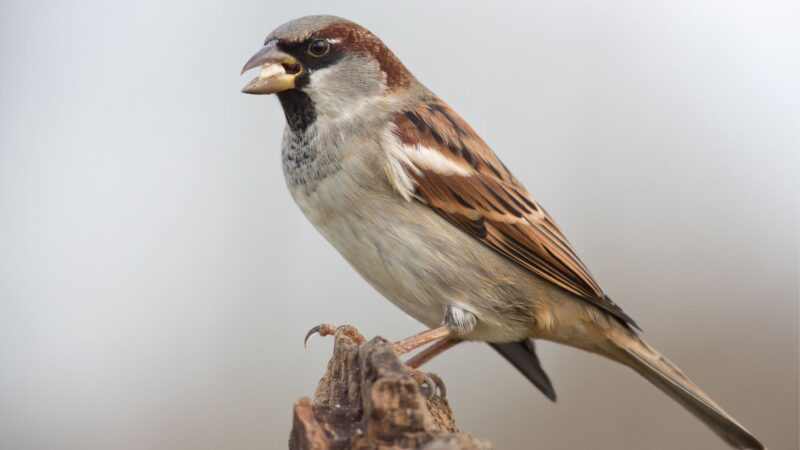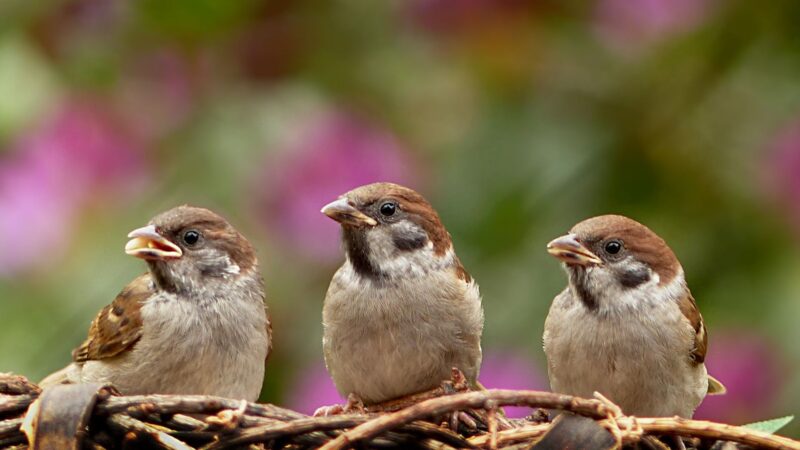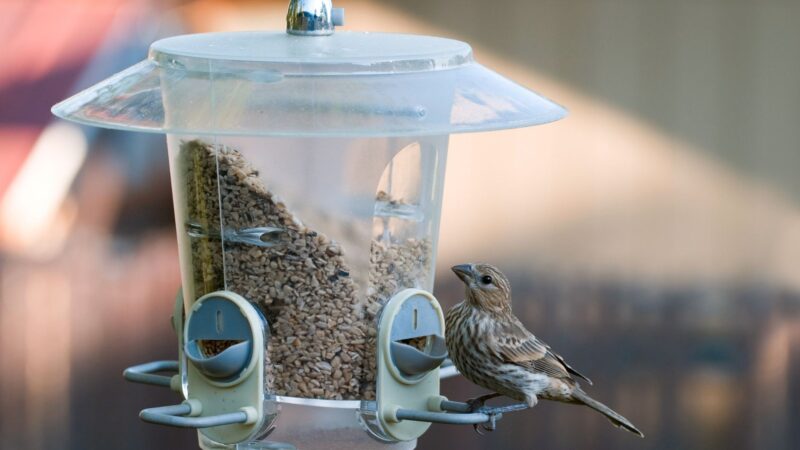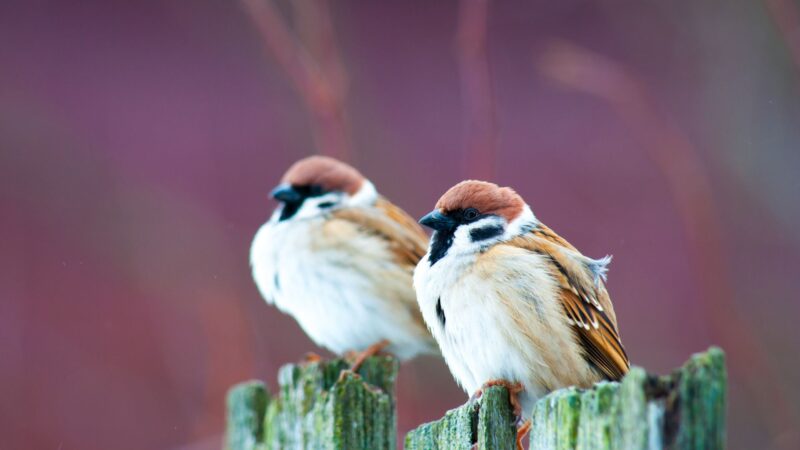English sparrows are invasive species and can, therefore, be quite the nuisance especially when they come in aggregations near homes and buildings. Although they look relatively harmless, they are aggressive in nature and can drive away native bird species. This is why getting rid of them is highly essential!
So, how to get rid of English sparrows? Do so through exclusion, removing food sources, using bird spikes and/or netting, modifying bird feeders and nest boxes, and using predator guards.
This article will provide you with everything you need to know about English sparrows, identifying them, and how to get rid of them as humanely as possible. Read further for more!
What Is an English Sparrow?

What Does an English Sparrow Look Like?
Also known as house sparrows, English sparrows are small, stocky-bodied birds with short legs and thick beaks. They have brown backs streaked across with black and a pale buff underside.
They are about 14 to 16 centimeters in length with wingspans averaging 76 millimeters and weighing around 26 to 32 grams. Males are set apart from females by their white cheeks and prominent black bibs and mask around the eye area.
What Do English Sparrows Eat?
They follow an omnivorous diet mostly consisting of insects, seeds, and grains. Birds found in rural areas tend to consume seeds dispersed in fields and from animal dung while urban sparrows prefer weed seeds and commercial seeds, making the latter frequent visitors of bird feeders.
Related: How to Get Rid of Monk Parakeets? | Ways to Discourage Them
How Long Do English Sparrows Live?
English sparrows usually live about 2 to 5 years in the wild. However, the oldest recorded bird lived to be 13 years old, indicating that their lifespans depend on how well they survive in their environment and against predation.
What Is the Nesting Habits of the English Sparrow?

Where Do English Sparrows Nest?
English sparrows nest in the hollows of deciduous and coniferous trees and crevices of buildings, which makes them cavity nesters. They usually begin building their nests between February to May. These birds are able to produce 1 to 8 eggs per clutch and are able to lay 4 clutches in just one season.
Are House Sparrows the Same as English Sparrows?
Yes, they are the same bird species. They are called English sparrows in North America and house sparrows anywhere else, but mostly in Central Asia and India.
Are English Sparrows Protected?
No, since they are considered exotic species in the United States. This means that citizens are legally permitted to harass them and remove their nests regardless if it is nesting season or not. However, some states may still require permits.
Moreover, it is still important that we employ ethical and humane controlling and preventing methods nonetheless.
What Attracts English Sparrow?

It all comes down to the prevalence of food or food sources in an area. If you have a bird feeder installed in your lawn, your chances of having a house sparrow infestation increases.
They are also attracted to areas that have potential nesting sites such as bird houses, crevices in houses and buildings, and hollows in trees.
Related: How to Prevent Birds Nesting in Roof? | Information and Control Guide
Why Is English Sparrow a Nuisance?
Despite their small size, English sparrows have the potential to become a huge problem if left undealt with. This is due to the following reasons:
- Aggressive nature: These birds display aggressive foraging behaviors which may drive other native bird species away when feeding. Additionally, they are also territorial around their nesting sites as they crowd out other birds.
- Property damage: Known for their pecking behavior, English sparrows are capable of destroying the rigid foam insulation found inside buildings, causing structural damage.
- Fecal droppings: Their foul-smelling fecal droppings and even feathers may pose health and sanitary hazards in and out buildings as well as on sidewalks near their roosting areas.
- Health hazard: English sparrows are associated with over 29 ectoparasites and diseases, which includes bird mites.
- Fire hazard: Since their bulky nests are built from straw, grass, debris, and feathers, they are quite flammable and could become a fire hazard.
How to Build an English Sparrow Trap?
You will need some food to use as bait such as millet, sunflower seeds, peanuts, or mealworms. Place this inside a wire mesh cage with a built-in funnel entrance and leave it to do its magic. The funnel entrance is used to make it difficult for the English sparrow to escape.
Regularly monitor the trap as other birds may trap themselves inside accidentally while trying to get to the bait. Move the trap around and make sure they’re located in places where the birds may potentially or have frequently visited.
How to Get Rid of English Sparrows in Your House?

Do so by closing any gaps, holes, openings, cracks, and crevices where they can be used as entry into your home. Dispose of any food and wastage that they may be attracted to. Place bird spikes or netting (made out of nylon, wire or plastic mesh) on your windowsills or rooftops to prevent perching and roosting.
Related: How to Keep Birds From Nesting on Porch? | The Effective Guide
How to Get Rid of English Sparrows Away From Feeders?
English sparrows are regular visitors of bird feeders, especially those in urban areas. To keep these birds away, switch to a different type of feeder—one that is perfect for smaller-sized birds such as tube feeders or suet feeders. Select bird seed that the birds don’t usually consume such as nyjer or safflower.
Related: How to Get Rid of Blackbirds From Bird Feeder? | 8 Effective Ways to Know
How to Get Rid of English Sparrows Out of Chickadee Nest Boxes?
You have to replace your current nest boxes with those that have entry holes large enough to fit chickadees but small enough to keep English sparrows out. Then, place predator guards around these nest boxes for added protection.
List of Sources
Fitzwater, W. D. (1994). House Sparrows.
Kamm, M., & Kuss, B. (n.d.). House Sparrow.
Lowther, P. E., & Cink, C. L. (2006) House Sparrow (Passer domesticus), version 2.0.
Roof, J. (n.d.) Passer domesticus house sparrow.
Schalau, J. (2010). Managing Nuisance Birds – August 4, 2010.
Utah State University. (n.d.) English/House Sparrow.
- How to Get Rid of Copperheads | Practical Guide - August 27, 2023
- How to Get Rid of Corn Snakes | What Makes Them Aggressive? - August 27, 2023
- How to Get Rid of Alligators | Safety Measures and Removal Methods - July 16, 2023
